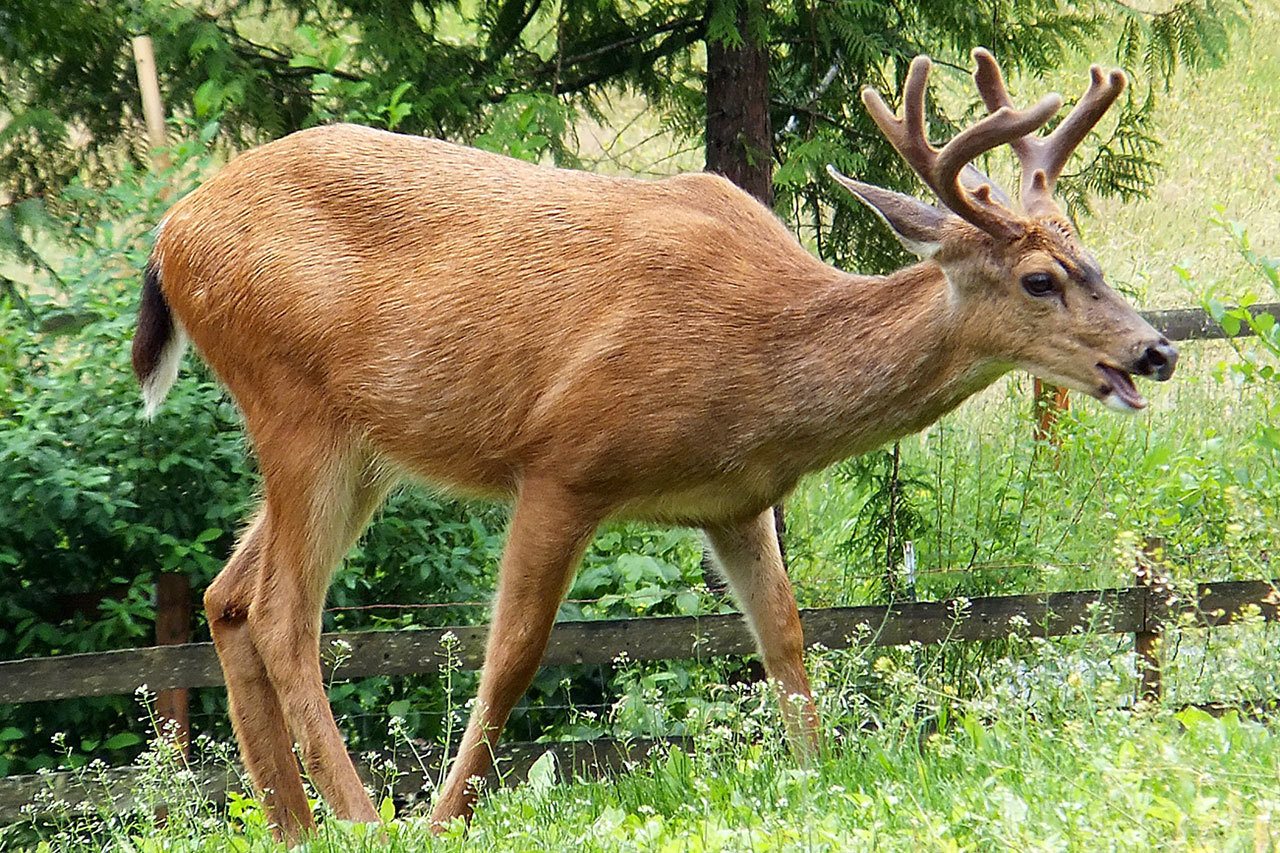Recreational hunters and anglers can expect to see a significant increase in license costs in 2017 if the Department of Fish and Wildlife’s proposal gets approval this legislative session.
The proposal calls for a 10 percent increase in hunting licenses across the board. Recreational anglers will notice a large increase in license costs, which would include a new $10 fee for each annual catch record card. These are the cards you use to document each catch of salmon, steelhead, sturgeon and halibut and have been free to license holders in previous years. Razor clam diggers are looking at a nearly 100 percent increase in out-the-door — meaning the cost includes dealer and transaction fees — license costs; from $14.10 to $24 annually. A combination saltwater, freshwater and shellfish license would rise from $55.35 per year to $64.70, with individual licenses rising $5.50 for freshwater, $4.98 for saltwater and more than $8 for shellfish.
The proposal was sent to Governor Jay Inslee in mid-December. “We continue working with the Governor’s office regarding our recreational license fee proposal,” said Fish and Wildlife spokesperson Michelle Dunlop. “In fact, the Governor included our request in his recommended 2017-19 budget.”
The license increases are part of Fish & Wildlife’s Washington’s Wild Future initiative, where public comment on fishing and hunting opportunities was taken and assessed to come up with a plan to maintain and improve access to these two activities so critical to the culture of the state.
“We’ve heard from thousands of Washingtonians about their priorities for recreation and conservation. They couldn’t be clearer: They want to preserve and expand fishing, hunting, and other outdoor opportunities, and they’re not interested in paying more to get less,” said Fish and Wildlife Director Jim Unsworth. “We share those goals, and so do the many communities across our state that rely on outdoor recreation and related commercial activities for their economic vitality.”
Unsworth says increasing management costs and other economic factors have created an atmosphere where the only way to maintain the state’s hunting and fishing opportunities is to increase revenues.
“We face tougher and more expensive federal requirements for hatchery operations, salmon and steelhead recovery, and other endangered species programs,” he said. “Emerging challenges such as elk hoof disease are also consuming more time and money. There’s no getting around it. New funds are required.”
The 2017 legislative session is mired in court-mandated education and mental health funding, so Unsworth is realistic about what to expect from them in the coming year.
“We’re under no illusions about the 2017 legislative session. We understand lawmakers must dramatically increase K-12 education spending and keep the rest of state government intact,” he said. “So we’re ready for a very challenging session, and we will continue to work with our stakeholders, the Legislature and the Governor to refine a funding and license package that earns their support.”
Fishing
Fishing license costs will go up according to how expensive the species targets by a particular license is to manage, according to the proposal. Fish and Wildlife also proposes equalizing the costs for senior and youth licenses. Currently, seniors age 65-69 pay $30.05 for an annual saltwater fishing license, those 70 and older pay $8.50. The proposal calls for a 65 and older license of $11.35. The proposal will add youth age 15 to the no fee list for most fishing licenses but would have all anglers age 15 and younger pay $5 for annual steelhead, salmon, sturgeon and halibut catch record cards.
Nonresident fees would rise in most instances and would remain well above those for resident anglers under the proposal. Nonresident shellfish fees would climb by more than $20, and previously free catch record cards would run $15 each.
The proposal is expected to generate about $15.1 million a year. According to Fish and Wildlife, the goal of the proposal is to set fees that more accurately reflect fisheries management costs and say it would also reduce barriers for youth and senior anglers; improve species management and data collection; and more closely align with fees in neighboring states. Part of the proposal includes an inflation adjustment every two years, if need, allowing the department to maintain ongoing operations without having to seek larger increases every few years.
Hunting
License cost increases are a little more straightforward in the proposal; a 10 percent increase across the board. In 2016 the out-the-door cost for a combination deer, elk, bear, cougar license was $95.50. The proposal would push it to $104.85 annually. Goose hunters in Grays Harbor and Pacific counties, however, would be subject to a significant increase in the required Migratory Bird Hunt Authorization in goose management area 2B. This additional requirement, along with not being available for purchase online, under the proposal will rise by about 20 percent to $84.37 annually.
These increases would raise $6.2 million over the next biennium, according to the department. Additional money would be raised by increasing the maximum penalty for failure to file an annual hunting reporting to $30 and raising the state migratory bird permit fee from $17 to $28. Like it is with the fishing proposal, hunting license cost increases in the future would be adjusted with the inflation rate every two years if needed.
The plan would include a $20 discount on their first license for hunter safety students; and an expansion of the “Feel Free to Hunt” and “Hunt by Reservation” programs, which allow access to private lands. Additionally, the state would add four enforcement officers to patrol these private land hunting areas, and would also seek funding for two habitat biologists to protect critical habitat, like deer and elk winter range. The department is also requesting funds to develop a contained, regulated shooting range in central Washington that would be used for general target shooting, hunter education and law enforcement training.


